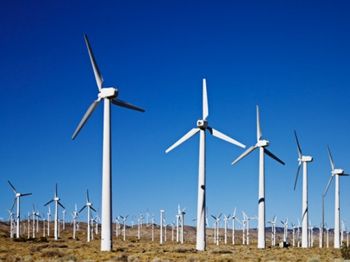
Viet Nam is looking for solutions to ensure energy security after scientists warned that climate change would have strong impacts on energy demand and supply in the country. Nguyen Ba Cuong, deputy head of the Ministry of Industry and Trade's Institute of Energy, said at a workshop yesterday that climate change impacts could cause an increase in demand for energy. Then the level of dependence on imported energy would increase, Cuong said. A dependency on imported coal to generate electricity would increase more and more, he said. It was forecast the country would have to import about 130-140 million tonnes of coal per year to generate electricity by 2030, he said. "It will even result in a suspension of supplying energy safely and stably for a long time in the country," he said. Viet Nam had taken initial steps to set up a system for energy security but there was no clear sign of diversification of energy supply in the country, he said. Dang Quang Thinh, a representative from the Ministry of Natural Resources and Environment, said climate change, with unusual and heavy rains, had already affected the operation of hydro-power plants, as well as oil rigs in the coastal areas and the transportation of oil and gas. "Identifying climate change impacts on hydro-power plants, electric power systems and the mining-and-using coal system is imperative to setting up a system for energy security," said Nguyen Duc Cuong, director of the institute's Centre for Renewable Energy and Clean Development Mechanism. Also yesterday, the Ministry of Natural Resources and Environment held a workshop to hear comments and suggestions from foreign partners on a national draft plan to cope with climate change. According to scientists, climate change would cause rising sea levels, rising temperatures, changing rainfalls and growing frequencies and intensities of extreme weather conditions. Viet Nam was one of countries to be hardest hit by climate change. A climate-change adaptation plan for seven coastal provinces in the Cuu Long (Mekong) Delta will aim to improve the lives of the region's 9.07 million residents by ensuring sustainable development. The Southern Institute for Water Resources Planning, which drew up the plan, has given priority to nine projects, including the building of sluice gates to prevent salt-water intrusion, the upgrading of sea dykes and the development of fresh-water sources and sustainable shrimp cultivation. The plan will be carried out in Tien Giang, Ben Tre, Tra Vinh, Soc Trang, Bac Lieu, Ca Mau and Kien Giang provinces, which account for more than half of the Delta's population. This plan, which covers a total area of 24,631 sq. km, also calls for developing new salt-resistant rice varieties and setting up warning systems about early floods and saline water intrusion. The Japan International Co-operation Agency helped the institute develop the plan, which was announced at a seminar organised by the agency and the Ministry of Agriculture and Rural Development in Can Tho City on Monday (Jan 28). The Delta is particularly vulnerable to climate change. The temperature is predicted to increase by 0.2-0.3 degrees Celsius and sea water by 8-9 cm every 10 years, reducing the Delta's rice output by 10 per cent in the winter-spring crop by 2030 and by 15 per cent in the winter-spring crop by 2050, according to the institute. The rainfall is expected to increase by 0.4-0.6 per cent every 10 years, causing a decline in output of other crops in the rainy season. Rice and fruit will be the most affected by saltwater intrusion.

 Previous page
Previous page Back to top
Back to top







